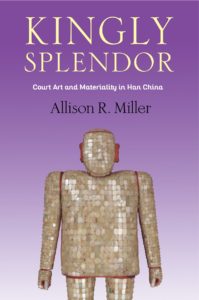Kingly Splendor
Court Art and Materiality in Han China
Allison R. Miller
Columbia University Press
The Western Han dynasty (202 BCE–9 CE) was a foundational period for the artistic culture of ancient China, a fact particularly visible in the era’s funerary art. Iconic forms of Chinese art such as dazzling suits of jade; cavernous, rock-cut mountain tombs; fancifully ornate wall paintings; and armies of miniature terracotta warriors were prepared for the tombs of the elite during this period. Many of the finest objects of the Western Han have been excavated from the tombs of kings, who administered local provinces on behalf of the emperors.
Allison R. Miller paints a new picture of elite art production by revealing the contributions of the kings to Western Han artistic culture. She demonstrates that the kings were not mere imitators of the imperial court but rather innovators, employing local materials and workshops and experimenting with new techniques to challenge the artistic hegemony of the imperial house. Tombs and funerary art, Miller contends, functioned as an important vehicle of political expression as kings strove to persuade the population and other elites of their legitimacy. Through case studies of five genres of royal art, Miller argues that the political structure of the early Western Han, with the emperor as one ruler among peers, benefited artistic production and innovation. Kingly Splendor brings together close readings of funerary art and architecture with nuanced analyses of political and institutional dynamics to provide an interdisciplinary revisionist history of the early Western Han.
Please check the press’ website here for ordering information.
